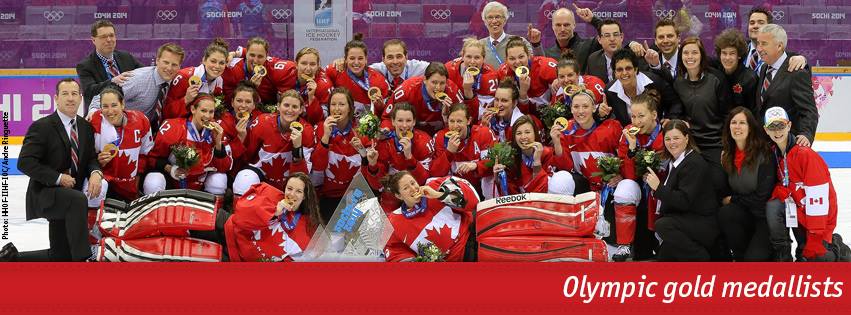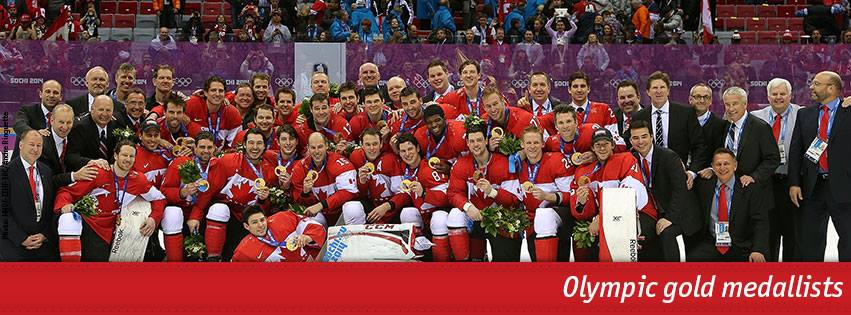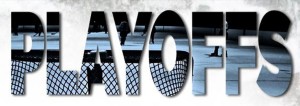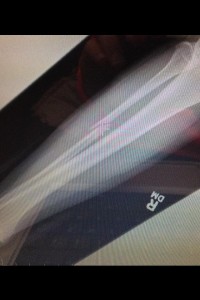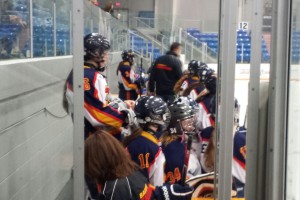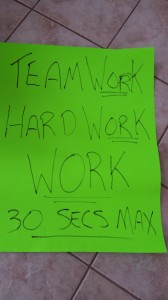As a diehard patriot the Canadian men’s and women’s teams’ Gold medal victories at the Sochi Olympics this past week were both fantastic events proving we remain the preeminent hockey nation. The Devil, the Boy, Momma and I were all up before the crack of dawn on Sunday morning to join others at a raucous early morning viewing/cheering party, complete with Canadian beer and bacon. The game itself was a little anti-climatic as we all had a sense of the outcome after having seen our side systematically dispense of what was supposed to be a powerhouse American squad in a 1-0 semi-final game.
And the systematic nature of the victories has been my focus in recent practices and will be highlighted in upcoming pre-game speeches with my own team. These Olympic contests with all of their pre-tournament hype naturally grabbed our collective attention, like no other games in recent memory and were also chock full of excellent coaching opportunities. I recently said Hard Work and Team Work are core elements of hockey and its great to be able to reference how it’s done at the highest level. Here are some of the specific points I noted from the Games and have relayed to my troops, who quickly recognized and affirmed the lessons learned.
Keep Your Stick on the Ice
Goals for the Canadian men were few and far between as they took a decidedly defensive tack against the Olympic field. However, two of the prettiest goals of the tournament were scored by Jamie Benn in the semi-final against the US and Jonathan Toews in the Gold medal game because of sound fundamental hockey plays.
Jamie Benn with the Deflection against the US to get Canada to the Gold medal game.
Jonathan Toews tips in all the goals Canada needed to take the Gold.
Pucks were simply shot at the net where both players were able to deftly redirect them behind the opposing goalies because their sticks were ready and on the ice. On our team, this small detail is often the difference between a goal or at least a shot on net and more often just another errant pass. The night after the semi-final game I quizzed a few of our players at practice on what they remembered of the goal and they all chirped back “his stick was on the ice.” Lesson learned.
The dominance of the women throughout the tournament was likewise buoyed by their sound offensive play, including their commitment to keeping their sticks in shooting positions and at the ready resulting in the goals and wins they needed to reach the final. They too set a great example for us to share with our students of the game.
Quick Shifts
In the first couple of Canadian women’s matches, the amply experienced analyst Cassie Campbell was quick to point out several of the girls were taking shifts upwards of 50 seconds long. This behaviour did not hurt them on the scoreboard in their early games, but would need to be corrected if they expected to compete against their arch rivals from the U.S. who would play with increased ability and pace. Fresh legs would be required from one shift to the next.
The men, on the other hand, were lauded by other reputable commentators time and again for keeping their shifts under 30 seconds, in keeping with the game plan laid out by their coaching staff. Many of these superstars, who are used to playing 15-20 minutes per game, as the primary skaters on the ice, were being limited to under 10 minutes in order to make the “system” work.
In minor hockey, and for some on my team, shifts can get long, even eclipsing 60 seconds. Too long for a seasoned pro, much less a teenager. I ask for 30-45 seconds of all out effort, which should leave players out of breath and wanting to take a rest. Having Olympic examples to point to can certainly help to drive the point home.
Hard Work
Though they were not being “paid” to compete in these games, the men on all of these Olympic teams certainly played with purpose and determination; no doubt taking pride in defending the crests on the fronts of their jerseys. Now, hockey players, by their very nature are a tough bunch who generally leave it all on the ice. However on this global stage, time and again there were clear displays of heart and courage. One that sticks out in my mind was US player and perennial shot blocker Ryan Callahan dropping to block three in one shift against Russia and stumbling to get back to his feet after the second.
The Canadian men for their part played a nearly flawless game of cycling the puck low in their foes’ ends game after game. This keep away strategy demands hard work by definition and Canada’s physically bigger forwards simply outworked all comers.
Just tonight we’ve learned Carey Price, Canada’s #1 goaltender aggravated an injury at some point during the Games, but battled through whatever pain or discomfort he felt right up until the final buzzer. I’m sure adrenalin had something to do with it.
Team Work
While both victorious Canadian squads arguably contained the best players in the world; neither could have reached their Golden goals without unselfish commitments to team play. I’ve already mentioned the men who logged uncharacteristically short ice-times, but perhaps the best example of the importance of teamwork came via the line shuffling done by the Canadian coaching staff. They knew they need to find the right combinations of superstars in order for their plan to work. All of these primarily offensive-minded players would need to adjust their games to suit the defensive approach; which most agree in the end was the key to victory. This group of players limited their opponents to only 3 goals in 6 games and none in either of their final two matches. In the third period of the Championship game Team Sweden, with its own bevy of offensive weapons, was only able to muster 4 shots. Kinda tough to come back from a three-goal deficit at that rate. And then by comparison…
The Game Ain’t Over Till….
This one is the simplest and most dramatic of all lessons as our Canadian women found themselves on the wrong end of a 2-0 score with less than three and a half minutes left in their Gold medal tilt against those aforementioned (and somewhat disliked) Americans. American who, no doubt, had already started clock-watching in anticipation standing teary-eyed atop the podium as the Star Spangled Banner echoed through the Bolshoy Arena. Post-game several Canadian players claimed they never felt they were down and out. To say they never gave up is a severe understatement. To say they worked hard (see above) till the end would be spot on. The two-goal lead would be erased by Marie-Philip Poulin with a tying goal coming at the 54 second mark of the third period. Poulin and her mates would then complete the comeback with a heart-stopping overtime winner leaving the US side dumbstruck.
Don’t Forget to Say Your Prayers
Ok, just to make sure we tell the whole story of the Canadian Women’s victory and pay proper homage to the ever-present Hockey Gods, we would be remiss if we did not give some credit to a certain goal post, which allowed the game to go into overtime.
So thank you Teams Canada (and the all-knowing Hockey Gods) for setting the standards by which we can work to groom our own Champions. I’m always looking for ammunition to inform, encourage and rally the troops and you provided the same in spades. Over the next week I hope we’re able to glean inspiration and execution from the example you’ve set to secure a berth in our own Provincial Championships. I’ll just be happy if they never give up; a lesson I’m fairly confident they’ve already learned based on recent events.
#imahockeydad

